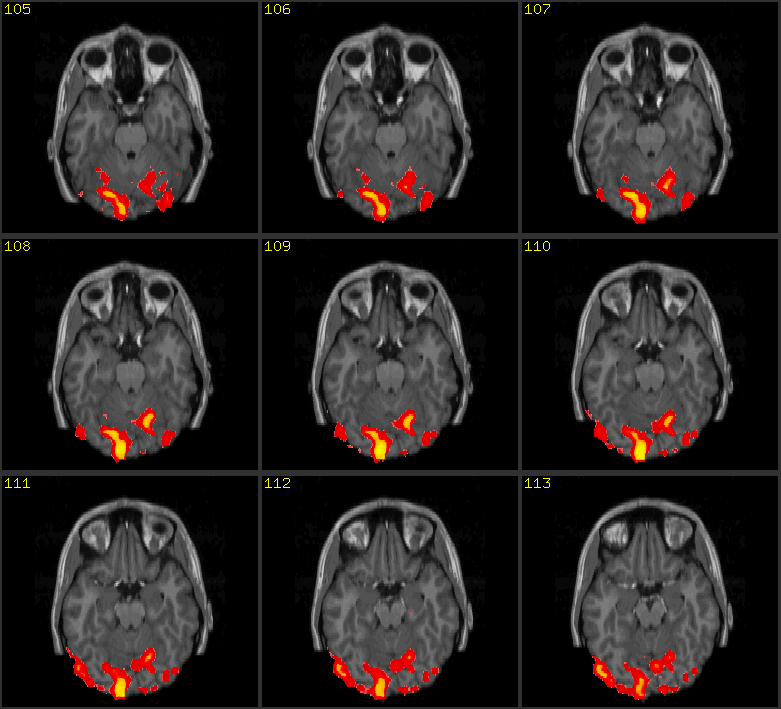Throughout history, societies have always placed an interest
in depicting humans in an accurate manner. To achieve this they had to
understand the anatomy of the human body. With the crude mechanical dissection
tools, scientists opened up cadavers for study. Jess Righthand states that the
Renaissance time period, an era filled with developments in art and science,
produced great works of art that reflected the most current knowledge of human
anatomy. According to Garabed Eknoyan, Michelangelo, the famous Renaissance artist, studied anatomy carefully
and carried out dissections in his artistic training. His sculptures and
frescoes such as the Creation of Man show great care taken in making the
subjects appear anatomically similar to humans. As societies understood
themselves better, they expressed this knowledge not only through textbook
diagrams but also through grand works of art. Still, the images of human
anatomy in even the most general biology textbooks are artistically drawn too
and general biology students must be able to identify the anatomical structures
in exams.
 | |
| Creation of Man |
In a more modern time period, art and medicine continue
informing one another. The X-ray and the MRI scan allowed less invasive ways of
viewing and portraying the human body . The perspectives change with the
prevalence of these techniques. Rather than seeing tissues and organs under the
wavelengths of visible light through dissection, the X-ray and MRI coupled with
specialized detectors allow medical workers to view a living human body with
little harm. From Abi Berger, the
wavelengths of the X-ray and MRI also allow emphasis on certain tissues or
tissue dynamics (35). In addition to the artistry of imaging technologies, Elisabeth Rosenthal reports that with changing issues in medicine, there is a significant, controversial push
in the field for a more humanistic focus similar to the past rather than the
modern science and technology based approach.
 |
| MRI scans, with the colored regions highlighting the area being studied |
Artists have incorporated medicine into their works such
as prosthetic robotic arms, implanted microchips, or plastic surgery on
themselves and bring up. These works can be viewed as commentaries on the future of
medical technology in their relation to humans, such as Eduardo Katz's
implanted chip in 1997 and how prevalent RFID chips are today. Many phones contain an RFID chip, and I carry around an RFID door access card, which reduces the weight of keys. Others such as Orlan and her work of having multiple, dramatized plastic
surgeries reflect society's standards of beauty. Orlan's work also brings out
the complex issue of medical ethics. According to Dr. Michelle Wright, the oath
of Hippocrates and today's medical ethics teachings state doctors must first do
no harm but respect their client's wishes in the art of medicine. In Orlan's
case, they could be causing harm in the creation of art.
 |
| RFID implants in each hand, viewed under X-ray |
References
Berger, Abi. “Magnetic Resonance Imaging.” BMJ : British
Medical Journal 324.7328 (2002): 35. Print.
Eknoyan, Garabed. "Michelangelo: Art, Anatomy, and the
Kidney." Kidney International. Nature Publishing Group, 12 Oct.
1999. Web. 25 Apr. 2015. <http://www.nature.com/ki/journal/v57/n3/full/4491441a.html>.
Righthand, Jess. "The Anatomy of Renaissance Art."
Smithsonian.com. 10 Oct. 2010. Web. 25 Apr. 2015.
<http://www.smithsonianmag.com/science-nature/the-anatomy-of-renaissance-art-36887285/?no-ist>.
Rosenthal, Elisabeth. "Pre-Med’s New Priorities: Heart
and Soul and Social Science." The New York Times. The New York
Times, 14 Apr. 2012. Web. 25 Apr. 2015.
<http://www.nytimes.com/2012/04/15/education/edlife/pre-meds-new-priorities-heart-and-soul-and-social-science.html?_r=0>.
Wright, Michelle. "Ideals and the Hippocratic
Oath." Patient.co.uk. 22 June 2011. Web. 26 Apr. 2015.
<http://www.patient.co.uk/doctor/Ideals-and-the-Hippocratic-Oath.htm>.
What is your personal opinion on the possibility of causing harm in the creation of art? It is indeed a complex issue, and a rather difficult scene to imagine. How far is too far? These are all questions I asked myself this week and still have yet to find a reasonable answer, especially regrading Orlan’s work.
ReplyDeleteI like how you considered the role the Hippocratic Oath plays into ethics vs. client wishes. Would you consider the number surgeries performed on Orlan to be “harmful”? I personally would, considering the number of operations she went through.
Based on your post, do you think that art has a direct influence or prediction of the future medical technology? Although sometimes artists' work seems outrageous, they do spark many of the advancements in the world. I liked that you made a comparison between doing harm to a patient and doing what pleases them. As a doctor, is it their role to perform something that could possibly do more harm to the patient that good?
ReplyDelete